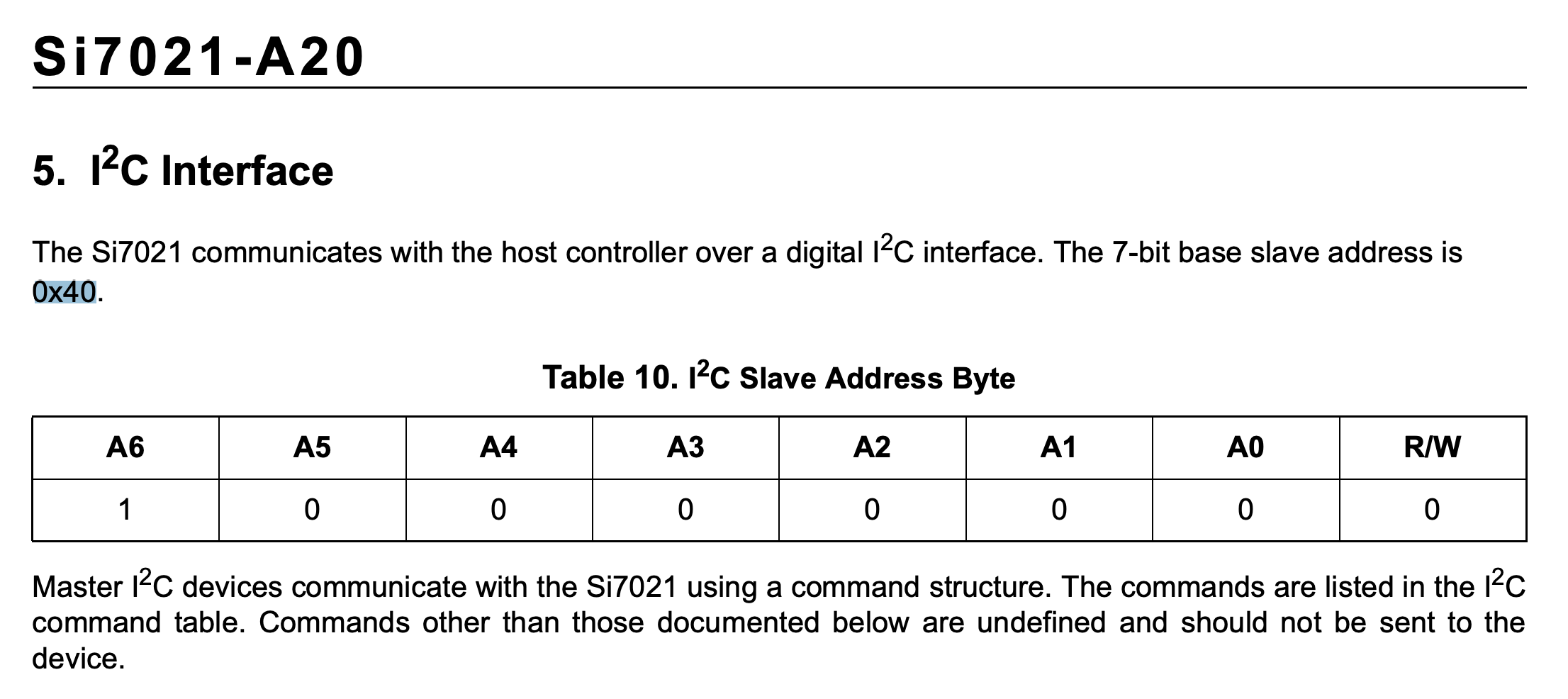Dependancies
Pre-requisites
Buy the components
pico-i2c.c
#include <stdio.h>
#include "pico/stdlib.h"
#include "hardware/i2c.h"
#define PIN_SDA 4
#define PIN_SCL 5
bool reserved_addr(uint8_t addr) {
return (addr & 0x78) == 0 || (addr & 0x78) == 0x78;
}
int main() {
stdio_init_all();
// This example will use I2C0 on GPIO4 (SDA) and GPIO5 (SCL) running at 100kHz
i2c_init(i2c0, 100 * 1000);
gpio_set_function(PIN_SDA, GPIO_FUNC_I2C);
gpio_set_function(PIN_SCL, GPIO_FUNC_I2C);
gpio_pull_up(PIN_SDA);
gpio_pull_up(PIN_SCL);
while (true) {
printf("\nI2C Bus Scan for Si7021 and VCNL4000\n");
printf(" 0 1 2 3 4 5 6 7 8 9 A B C D E F\n");
for (int addr = 0; addr < (1 << 7); ++addr) {
if (addr % 16 == 0) {
printf("%02x ", addr);
}
int ret;
uint8_t rxdata;
if (reserved_addr(addr))
ret = PICO_ERROR_GENERIC;
else
ret = i2c_read_blocking(i2c0, addr, &rxdata, 1, false);
printf(ret < 0 ? "." : "@");
printf(addr % 16 == 15 ? "\n" : " ");
}
sleep_ms(2000);
}
}This example code does an I2C Bus Scan for the sensors Si7021 and VCNL4000.
The datasheets of the 2 sensors below show that the serial monitor prints are in line with the information in the datasheet.
The I2C address for Si7021 is 0x40.

The I2C address for VCNL4000 is 0x13.
